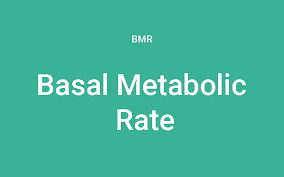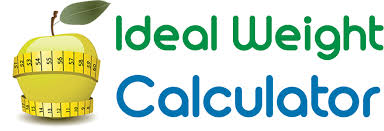By harnessing the power of squat one rep max calculator, you can accurately estimate your maximum squat capacity, set realistic goals, and tailor your workout program to your unique needs. Get ready to unlock your full potential and elevate your fitness experience with the help of 1 rep max calculator.
Squat One Rep Max Calculator
| Repetition | % 1RM | Weight |
|---|
[ez-toc]
When it comes to strength training, one of the fundamental exercises that often takes center stage is the squat. The squat is a compound movement that targets multiple muscle groups, including the quadriceps, hamstrings, glutes, and lower back. One way to measure and track your progress in squatting is by determining your Squat One Rep Max (1RM). In this article, we will delve into what Squat One Rep Max is and explore the Epley formula, a widely used method for calculating it.
What is Squat One Rep Max (1RM)?
Your Squat One Rep Max (1RM) is the maximum amount of weight you can lift for a single repetition of the squat exercise. It is a valuable metric for strength athletes, powerlifters, bodybuilders, and anyone interested in tracking their strength gains. Knowing your 1RM allows you to design more effective training programs, set achievable goals, and monitor your progress over time.
Why is knowing your maximum lift useful ?
In the realm of strength training, knowing your maximum lift is an essential component of designing effective and personalized workout programs. But why is it so important to be aware of your maximum lift, and how can it transform your fitness journey? In this article, we will delve into the significance of knowing your maximum lift, its role in goal setting, progress tracking, and optimizing your training. Embrace the power of personalized strength training by discovering the value of your maximum lift!
The Value of Knowing Your Maximum Lift
Understanding your maximum lift enables you to create customized workout routines tailored to your current strength levels. By selecting the appropriate weight loads based on a percentage of your maximum lift, you ensure your training remains both safe and effective. This individualized approach to strength training can lead to more significant gains and improved overall performance.
Enhances Goal Setting and Motivation
When you know your maximum lift, you can set clear, measurable, and attainable strength goals for yourself. Tracking your progress toward these goals can help you stay motivated and focused on your fitness journey. As you witness your strength increasing over time, you’ll be more inclined to push yourself further and reach new heights.
Enables Progress Tracking and Adjustments
Monitoring changes in your maximum lift allows you to assess your strength gains and make informed decisions about adjusting your training program. By continually evaluating your progress, you can ensure that your workouts remain challenging and effective. This ongoing assessment enables you to make necessary adjustments to your program, such as increasing the weight or altering the volume, to continue making progress and avoid plateaus.
Promotes Proper Intensity Management
Knowing your maximum lift helps you regulate the intensity of your workouts, which is crucial for maximizing your training results. With an awareness of your maximum lift, you can select appropriate weight loads for different training goals, such as muscle hypertrophy, endurance, or power development. This ability to fine-tune the intensity of your workouts allows you to optimize your training for the specific adaptations you are aiming to achieve.
Reduces the Risk of Injury
Being aware of your maximum lift allows you to train within your limits, reducing the risk of injury due to overloading or improper technique. By selecting weights that align with your current strength levels, you can perform exercises with proper form and minimize the potential for injury. This focus on safety and correct technique is essential for long-term success in your fitness journey.
Encourages Balanced Strength Development
Understanding your maximum lift for various exercises can help you identify and address any strength imbalances or weaknesses in your training. By evaluating your maximum lift across different movements, you can create a more balanced and well-rounded strength training program. This balanced approach can enhance your overall performance and reduce the likelihood of injury.
Epley Formula – How to Calculate Squat 1RM Max
The Epley formula is a mathematical equation used to estimate your 1RM based on the amount of weight you can lift for a certain number of repetitions. This formula is named after its creator, American powerlifter and physician Dr. Michael L. Epley. The Epley formula is as follows:
1RM = W x (1 + 0.0333 x R)
Where:
- 1RM is your estimated one-rep max.
- W is the weight you lifted.
- R is the number of repetitions you performed with that weight.
Let’s break down how to use the Epley formula to calculate your Squat 1RM:
Select a Weight: Start by choosing a weight that you can lift for a specific number of repetitions. For example, if you can squat 200 pounds for 5 repetitions, your W would be 200, and your R would be 5.
Apply the Formula: Plug your values into the formula. In this example, your calculation would look like this:
1RM = 200 x (1 + 0.0333 x 5)
Calculate: Perform the calculations to find your estimated 1RM. In this case:
1RM = 200 x (1 + 0.1665)
1RM ≈ 233.3 pounds
So, based on the Epley formula, your estimated Squat 1RM is approximately 233.3 pounds.
Tips for Using the Epley Formula:
Ensure that the weight you select and the number of repetitions you perform are done with proper form and control to get an accurate estimate.
When testing your 1RM, always prioritize safety. Have a spotter if possible, and be prepared to drop the weight safely if you are unable to complete the lift.
Keep in mind that the Epley formula provides an estimate, and actual 1RM values can vary based on factors such as fatigue, technique, and individual differences in strength.
It’s a good practice to periodically retest your Squat 1RM to track your progress and adjust your training program accordingly.
How to Increase Your One-Rep Max for Squat
1. Progressive Overload
Progressive overload is the foundation of strength training. It involves gradually increasing the weight you lift over time. To increase your squat 1RM, you must consistently challenge your muscles with heavier weights. This progressive increase in resistance stimulates muscle growth and strength gains.
2. Proper Form
Maintaining proper squat form is crucial for both safety and maximizing strength gains. Focus on proper technique, including hip and knee alignment, a neutral spine, and controlled descent and ascent. Poor form can lead to injuries and hinder your progress.
3. Squat Variations
Incorporate different squat variations into your training regimen. Variations like front squats, box squats, and pause squats can target specific muscle groups, break plateaus, and improve overall squat strength.
4. Strength Training Periodization
Implement a well-structured training program with periodization. Periodization involves organizing your training into phases, each with a specific focus on intensity and volume. This approach prevents overtraining, promotes recovery, and optimizes strength gains.
5. Increase Frequency
Training frequency matters. If you want to improve your squat 1RM, consider squatting more frequently during the week. However, be mindful of recovery and listen to your body to avoid overuse injuries.
6. Assistance Exercises
Incorporate assistance exercises that target muscles used in the squat, such as leg presses, lunges, and hamstring curls. These exercises can strengthen muscle groups that may be limiting your squat performance.
7. Nutrition and Recovery
Your diet plays a significant role in your strength gains. Ensure you are consuming enough calories, protein, and nutrients to support muscle growth and recovery. Prioritize adequate sleep and rest to allow your muscles to repair and grow.
8. Warm-Up and Mobility
A thorough warm-up and mobility routine can improve flexibility and joint health, making it easier to perform squats with proper form. Dedicate time to warm up your muscles and joints before heavy squat sessions.
9. Set Realistic Goals
Set specific, measurable, and realistic goals for your squat 1RM. Having clear objectives will help you stay motivated and focused on your training.
10. Seek Professional Guidance
Consider working with a qualified strength coach or personal trainer who can provide expert guidance, correct your form, and design a tailored training program to increase your squat 1RM safely and effectively.
What are Squat Exercises ?
Squat exercises are a compound movement that primarily targets the muscles in your lower body, including your quadriceps, hamstrings, glutes, and calves. The basic squat movement involves bending your knees and lowering your hips as if you’re sitting down, then standing back up to the starting position. This versatile exercise can be modified and scaled to suit any fitness level or goal, making it an indispensable addition to any workout regimen.
Benefits of Squat Exercises
Builds Lower Body Strength: Squat exercises are an incredibly effective way to develop lower body strength, which is essential for everyday movements such as walking, running, and climbing stairs.
Improves Core Stability: As you squat, your core muscles, including your abdominals and lower back, engage to maintain balance and stability. This helps strengthen your core and improves your overall functional fitness.
Enhances Flexibility and Mobility: Performing squats with proper form requires flexibility and mobility in your hips, knees, and ankles. Consistently practicing squat exercises can lead to improved flexibility and mobility over time.
Burns Calories: As a compound movement, squat exercises engage multiple large muscle groups at once, leading to a higher calorie burn than many isolation exercises.
Boosts Athletic Performance: Squat exercises are a functional movement that translates to improved performance in various sports and physical activities.
Types of Squat Exercises
Bodyweight Squat: This basic squat variation requires no equipment and is an excellent starting point for beginners.
Goblet Squat: Holding a kettlebell or dumbbell close to your chest, this variation increases resistance and challenges your core.
Front Squat: Performed with a barbell resting on your shoulders in front of your body, the front squat emphasizes your quadriceps and upper back.
Back Squat: The back squat involves placing a barbell on your upper back and is a popular variation for building lower body strength and muscle mass.
Sumo Squat: With a wider stance and toes pointed outward, the sumo squat targets your inner thigh muscles and glutes more effectively than traditional squats.
Tips for Perfecting Your Squat Technique
Keep Your Chest Up and Spine Neutral: Maintain a tall posture, with your chest up and your spine neutral to protect your lower back.
Push Your Hips Back: Initiate the movement by pushing your hips back, as if you’re sitting in a chair.
Maintain Knee Alignment: Ensure your knees track over your toes throughout the movement to avoid unnecessary strain on your joints.
Engage Your Core: Tighten your abdominal muscles to maintain stability and support throughout the squat.
Go Deep: Aim for a full range of motion by squatting as low as you can while maintaining proper form.
What percentage of my 1 rep max should I lift for ?
Using a percentage of your 1-rep max (1RM) is an effective way to customize your strength training workouts based on your specific goals. But what percentage of your 1RM should you lift for optimal results, and how does it vary depending on your objectives? In this article, we will explore the ideal lifting percentages for different training goals, including strength, hypertrophy, and endurance. Get ready to fine-tune your workouts and maximize your strength training progress by understanding the power of 1RM percentages!
Lifting Percentages for Different Training Goals
Goal: Increase your overall strength and ability to lift heavier weights.
Percentage Range: 85-100% of your 1RM
Repetitions: 1-5 reps per set
Training with a high percentage of your 1RM (85-100%) focuses on developing maximum strength. This intensity range targets your fast-twitch muscle fibers and stimulates neural adaptations, ultimately increasing your capacity to lift heavier weights.
Developing Muscle Hypertrophy
Goal: Increase muscle size and improve overall aesthetics.
Percentage Range: 65-85% of your 1RM
Repetitions: 6-12 reps per set
Training within the 65-85% range of your 1RM primarily targets muscle hypertrophy or growth. This moderate intensity stimulates muscle protein synthesis and promotes an increase in muscle size while still developing strength.
Enhancing Muscular Endurance
Goal: Improve your muscles’ ability to perform repeated contractions over an extended period.
Percentage Range: 50-65% of your 1RM
Repetitions: 12-20 reps per set
Training with lower intensity (50-65% of your 1RM) emphasizes muscular endurance. This approach increases your muscles’ capacity to sustain repeated contractions, resist fatigue, and maintain performance over time.
Factors to Consider When Selecting Your Lifting Percentage
Beginners should generally start with lower percentages of their 1RM to prioritize proper technique and reduce the risk of injury. As you gain experience and confidence, you can gradually increase the intensity to achieve your desired training adaptations.
Recovery and Training Frequency
Higher intensity training (e.g., lifting 85-100% of your 1RM) typically requires longer recovery periods between sessions. Consider your training frequency and ensure you allow adequate recovery time to avoid overtraining or injury.
Exercise Selection
Compound exercises, such as squats, deadlifts, and bench presses, often require heavier loads to achieve desired results. In contrast, isolation exercises, like bicep curls or leg extensions, usually call for lighter loads to prevent excessive strain on smaller muscle groups.
Understanding the ideal lifting percentage based on your 1-rep max is crucial for tailoring your strength training program to your specific goals. By adjusting the intensity of your workouts according to your desired training adaptations, you can maximize your progress and ensure your training remains safe, effective, and targeted. Embrace the power of 1RM percentages and watch as your strength training journey reaches new heights!
FAQ on Squat One Rep Max (1RM)
What is Squat One Rep Max (1RM)?
Squat One Rep Max (1RM) is the maximum amount of weight an individual can lift for a single repetition of the squat exercise. It measures a person’s maximal strength in the squat.
Why is knowing my Squat 1RM important?
Knowing your Squat 1RM is essential for tracking strength progress, setting training goals, and designing effective workout programs. It serves as a benchmark for assessing lower body strength.
How can I test my Squat 1RM safely?
To test your Squat 1RM safely, follow these guidelines:
- Warm up thoroughly.
- Perform several lighter sets leading up to your 1RM attempt.
- Have a spotter present for safety.
- Use proper squat form to reduce injury risk.
- Be prepared to abandon the lift if you can’t complete it safely.
What are some common squat variations for improving 1RM?
Squat variations like front squats, box squats, pause squats, and Bulgarian split squats can be incorporated into your training to target specific muscle groups and enhance overall squat strength.
How often should I aim to increase my Squat 1RM?
The frequency of increasing your Squat 1RM can vary based on your training experience and goals. For beginners, gradual progress may occur every few weeks, while advanced lifters may aim to do so every few months.
What role does proper form play in improving Squat 1RM?
Proper form is crucial for both safety and strength gains. Correct squat form ensures that you’re engaging the right muscles and reducing the risk of injury. It also allows you to lift more efficiently.
How can I break through a Squat 1RM plateau?
Breaking through a plateau may involve changing your training routine, incorporating squat variations, adjusting your nutrition, and ensuring adequate rest and recovery. Consulting a coach or trainer can provide valuable insights.
Can I improve my Squat 1RM without lifting heavier weights?
A8: Yes, you can improve your Squat 1RM by increasing the number of repetitions you can perform with a given weight, enhancing muscle endurance, and then gradually working on lifting heavier weights.
What is the significance of periodization in Squat 1RM training?
Periodization involves organizing your training into phases with varying intensity and volume. It helps prevent overtraining, promotes recovery, and optimizes strength gains, making it a valuable strategy for improving Squat 1RM.
Are there any risks associated with testing Squat 1RM?
Testing Squat 1RM can be physically demanding and carries some risk of injury if not done safely. It’s essential to warm up adequately, use proper form, and have a spotter when attempting your 1RM to minimize these risks.
The Ultimate Guide to Squat One-Rep Max Calculator
Discover the power of squat one rep max calculator tools and their role in optimizing your strength training journey.
In the world of strength training, accurately determining your squat one-rep max (1RM) is vital for tracking progress, setting realistic goals, and customizing your workout program. Using a squat one rep max calculator can simplify this process and help you unlock your full potential in the weight room. In this comprehensive guide, we will delve into the concept of 1 rep max calculator squat tools, their features, benefits, and how to use them effectively. Get ready to elevate your fitness journey by harnessing the power of squat one rep max calculators!
Understanding Squat One Rep Max Calculator Tools
A squat one rep max calculator is an online or mobile-based tool designed to estimate your maximum squat capacity based on your performance in submaximal sets. These calculators use various formulas, such as the Epley, Lander, or Schwartz formulas, to provide a personalized 1RM estimate without the need for direct testing. By inputting data like the weight lifted and the number of repetitions completed, you can quickly and easily determine your squat 1RM.
The Benefits of Using a 1 Rep Max Calculator Squat Tool
Safety: Squat one rep max calculators enable you to estimate your 1RM without attempting a maximal lift, reducing the risk of injury.
Convenience: By using a 1 rep max calculator squat tool, you can quickly calculate your squat 1RM anytime, anywhere, without the need for extensive testing.
Personalized Training Programs: Knowing your squat 1RM allows you to create customized workout routines based on your current strength levels, ensuring safe and effective training.
Goal Setting and Motivation: Establishing a clear squat 1RM provides a measurable objective for your strength training, allowing you to set realistic and attainable goals.
Progress Tracking: By periodically recalculating your 1RM using a squat one rep max calculator, you can monitor your strength gains and make informed decisions about adjusting your training program.
How to Use a Squat One Rep Max Calculator Effectively
Select an appropriate weight: Warm up and choose a weight that you can lift for multiple repetitions (e.g., between 3-10 reps) with proper form.
Perform the set to failure: Complete as many reps as possible with the chosen weight until you reach muscular failure while maintaining good technique.
Record the weight and repetitions: Note down the weight you used and the number of repetitions you completed.
Input data into the calculator: Enter the required information, such as weight lifted and repetitions completed, into the squat one rep max calculator.
Analyze the results: The calculator will estimate your squat 1RM based on the input data and the selected formula. Use this information to customize your training program, set goals, and track progress.
Selecting the Right Squat One Rep Max Calculator for You
When choosing a squat one rep max calculator, consider the following factors:
Training Goals: Select a calculator that uses a formula best suited to your specific training goals and rep ranges.
User Interface: Choose a calculator with an intuitive and user-friendly interface for ease of use.
Accuracy: While no squat one rep max calculator can provide 100% accurate results, some formulas may be more accurate for specific rep ranges and training goals.
Additional Features: Some calculators may offer additional features, such as tracking progress, generating training programs, or providing technique tips. Consider whether these features align with your needs and preferences.
A squat one rep max calculator is a valuable tool for estimating your maximum squat capacity, setting realistic goals, and customizing your training program. By understanding the benefits and features of various 1 rep max calculator squat tools and selecting the right one for your needs, you can elevate your strength training journey and unlock your full potential. Combine the power of squat one rep max calculators with effective strength training strategies to transform your fitness journey and reach new performance heights!






